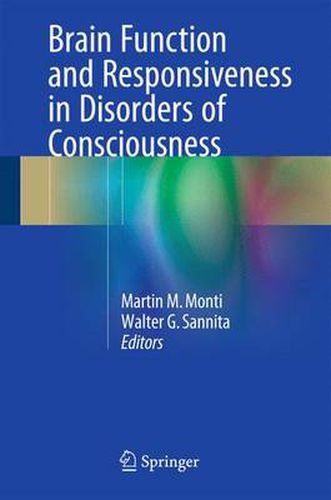Readings Newsletter
Become a Readings Member to make your shopping experience even easier.
Sign in or sign up for free!
You’re not far away from qualifying for FREE standard shipping within Australia
You’ve qualified for FREE standard shipping within Australia
The cart is loading…






This book provides up-to-date information on all aspects of brain function and responsiveness in patients with severe disorders of consciousness. Topics considered include the mechanisms and measures of consciousness; perfusional, metabolic, and fMRI markers of responsiveness; responsiveness to pain; the role of brain-computer interface techniques; electrophysiology; cortical excitability; autonomic responsiveness; the natural history of vegetative and minimally conscious states; and prediction of outcome. Brain neuroimaging has documented residual responsiveness in the vegetative state. The scientific impact of this seminal evidence has generated a schism between neuroscience and the clinical criteria defining consciousness and responsiveness. Our current understanding of human consciousness must be reconsidered also in view of the emotional impact on the public and the far-reaching implications for diagnosis, prognosis, medical treatment, human costs, medical and individual responsibility, logistics, healthcare, ethics, etc. It is hoped that this book will help to bridge the gap between neuroscience and clinical routine.
$9.00 standard shipping within Australia
FREE standard shipping within Australia for orders over $100.00
Express & International shipping calculated at checkout
This book provides up-to-date information on all aspects of brain function and responsiveness in patients with severe disorders of consciousness. Topics considered include the mechanisms and measures of consciousness; perfusional, metabolic, and fMRI markers of responsiveness; responsiveness to pain; the role of brain-computer interface techniques; electrophysiology; cortical excitability; autonomic responsiveness; the natural history of vegetative and minimally conscious states; and prediction of outcome. Brain neuroimaging has documented residual responsiveness in the vegetative state. The scientific impact of this seminal evidence has generated a schism between neuroscience and the clinical criteria defining consciousness and responsiveness. Our current understanding of human consciousness must be reconsidered also in view of the emotional impact on the public and the far-reaching implications for diagnosis, prognosis, medical treatment, human costs, medical and individual responsibility, logistics, healthcare, ethics, etc. It is hoped that this book will help to bridge the gap between neuroscience and clinical routine.